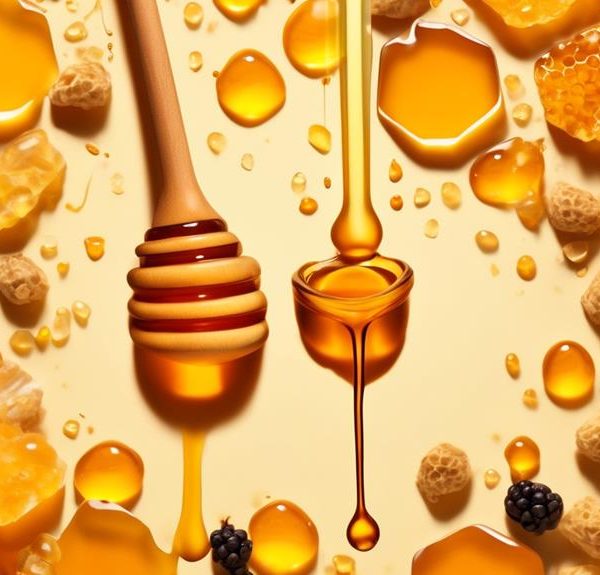Hidden in nature, the existence and conditions of wild honey bees may surprise you; discover their secret world.
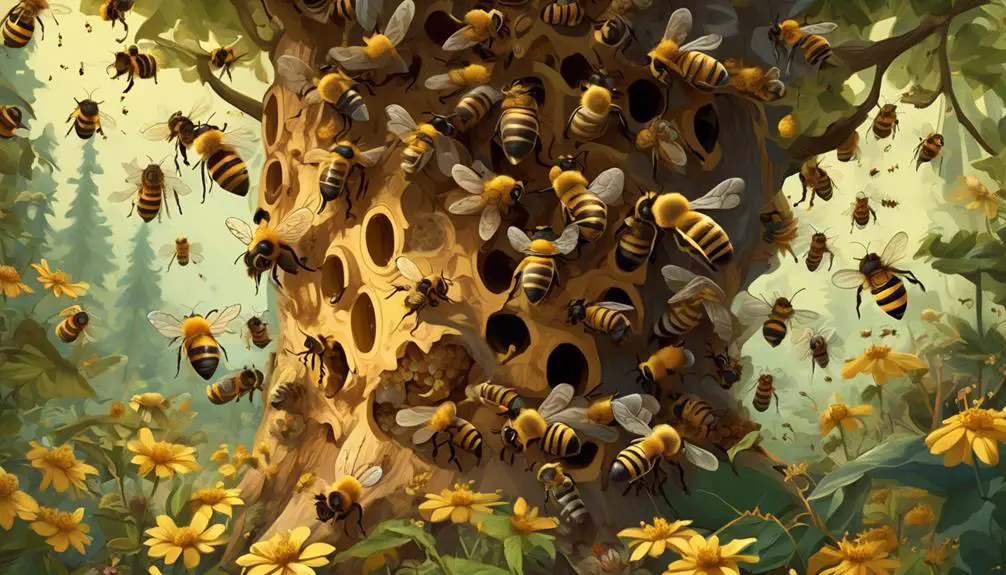
Are There Wild Honey Bees
Imagine you're walking through a dense forest, the sun is shining and you suddenly stumble upon a large, buzzing hive nestled in an old oak tree. This isn't the work of a local beekeeper; you've just discovered wild honey bees. They're out there, living independently from human interference and commercial hives.
But how common are these wild communities? Are they thriving or struggling in today's changing environment?
Well, you might be surprised by the answers to these questions, they're not as straightforward as you might think.
Key Takeaways
- Wild honey bees are a keystone species crucial for pollination and biodiversity.
- They exhibit complex social structures with specific roles and communication methods like the 'waggle dance.'
- Wild honey bees are adaptable to diverse habitats, from forests to urban areas, using man-made structures opportunistically.
- Threats to wild honey bee populations include habitat destruction, climate change, diseases, pests like Varroa mites, and pesticides, highlighting the need for conservation efforts.
Understanding Wild Honey Bees
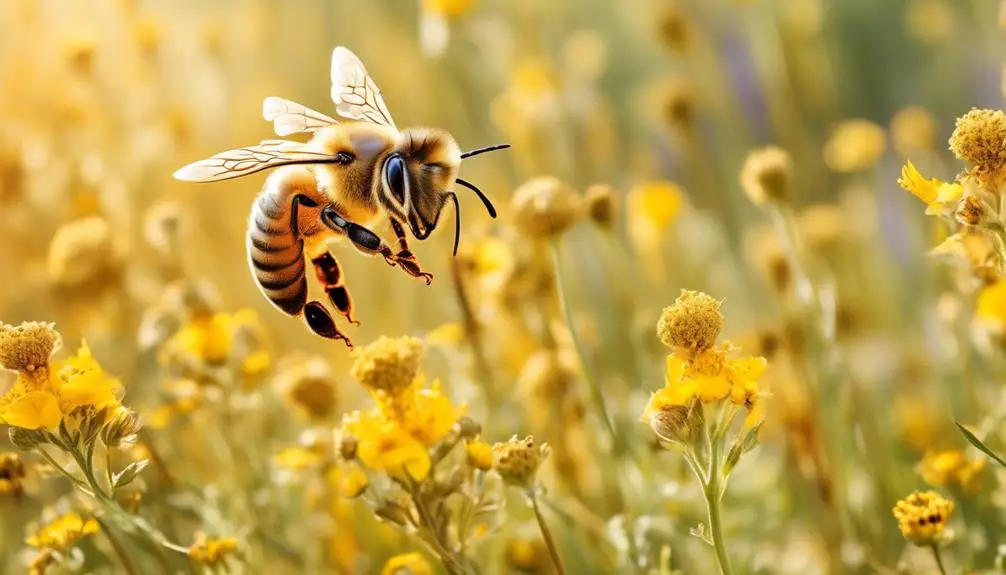
To fully appreciate the role of wild honey bees in our ecosystem, you'll need to delve into their complex behaviors, unique characteristics, and remarkable adaptation strategies. As a keystone species, they're integral in pollination, supporting biodiversity, and maintaining balance in different ecosystems. You'll find that their social structure is highly organized, with each bee playing a specific role. For instance, worker bees collect nectar and pollen, while drones mate with the queen, ensuring genetic diversity in the hive.
Now, consider their extraordinary communication abilities. Through a series of movements known as the 'waggle dance,' bees can relay precise information about the location of food sources to their hive mates. They're also equipped with an uncanny sense of direction, thanks to their ability to sense the Earth's magnetic field.
Regarding adaptations, wild honey bees have evolved to withstand various environmental pressures. They've developed mechanisms for temperature regulation, allowing them to survive in diverse climates. They're also capable of defending their hives against predators and disease.
Habitats of Wild Honey Bees

While understanding the behaviors and adaptations of wild honey bees is crucial, it's equally important to consider the diverse environments these remarkable creatures call home. You'll find wild honey bees in a wide range of habitats, from dense forests and tropical rainforests to desert landscapes and urban settings. Their adaptability is truly remarkable.
In forested regions, wild honey bees often establish their hives in tree cavities, providing them with natural protection against predators and harsh weather conditions. They're not picky about the type of tree, as long as it offers ample space and security for their colony.
On the other hand, in urban areas, these bees may choose man-made structures for their homes, such as the walls of buildings, hollow metal poles, or even abandoned vehicles. They're opportunistic, making the best out of the environments they find themselves in.
Yet, despite this adaptability, wild honey bees are facing significant threats in many of their habitats. Habitat destruction, climate change, and the use of pesticides are some of the challenges they're battling against. It's essential to understand their habitats and the threats they face, as it will ultimately play a significant role in their survival.
Survival Strategies of Wild Bees
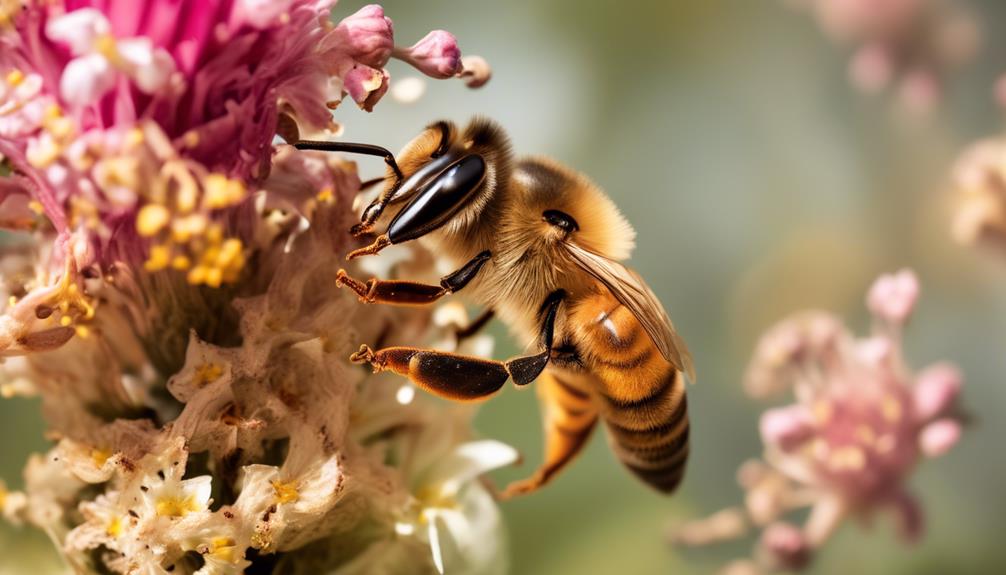
In the face of mounting challenges, wild honey bees have developed a variety of survival strategies that are as diverse and innovative as the habitats they inhabit. They've evolved to be highly adaptable, resilient to environmental changes, and capable of finding food and shelter in the most unlikely of places.
One key survival strategy is their intricate social structure. Every bee has a role, from the queen, whose sole function is to lay eggs, to the workers, who perform numerous tasks to maintain the hive. This structure enhances the colony's efficiency and survival chances.
Wild honey bees also employ a defensive strategy known as 'stinging.' When a hive is threatened, bees will sting the intruder. Even though this act costs them their life, it ensures the survival of the hive as a whole.
In addition, these bees have developed the ability to regulate the temperature within their hives, ensuring the survival of their brood during harsh winters and hot summers. Furthermore, they've mastered the art of foraging, using their keen sense of smell to locate nectar-rich flowers miles away.
Importance of Wild Honey Bees
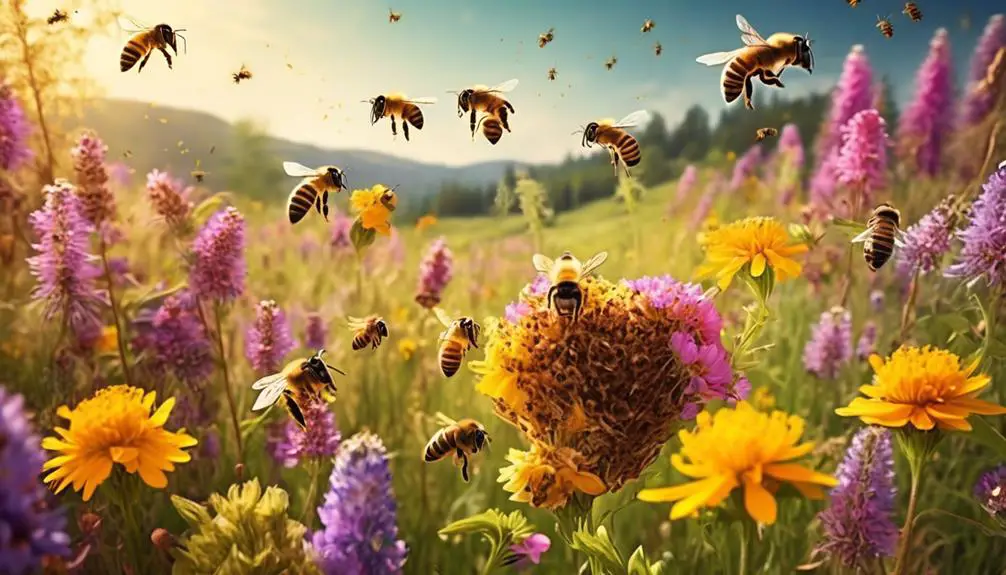
Undeniably, wild honey bees play a crucial role not only in the ecosystem but also in human life. They're prolific pollinators, responsible for helping about 80% of the world's flowering plants reproduce. Without them, our plates would look starkly different, and not for the better.
Imagine this: you're at your favorite grocery store, and the shelves are barren of many fruits, vegetables, and nuts you usually enjoy. That's the world without honey bees. They're integral to the cultivation of crops like apples, almonds, and blueberries. Without these busy insects, our diets would lack diversity and essential nutrients.
But their importance doesn't stop at our dinner tables. Wild honey bees also support biodiversity by pollinating plants in wild ecosystems, helping to maintain habitats for other species. Moreover, they produce honey and beeswax, two products with numerous uses and benefits for humans.
However, they're under threat due to habitat loss, pesticides, and climate change. Their decline could have serious consequences for our food system and ecosystems. Understanding and acknowledging the importance of wild honey bees is the first step towards their conservation. We owe them more than we realize.
Threats to Wild Honey Bee Populations
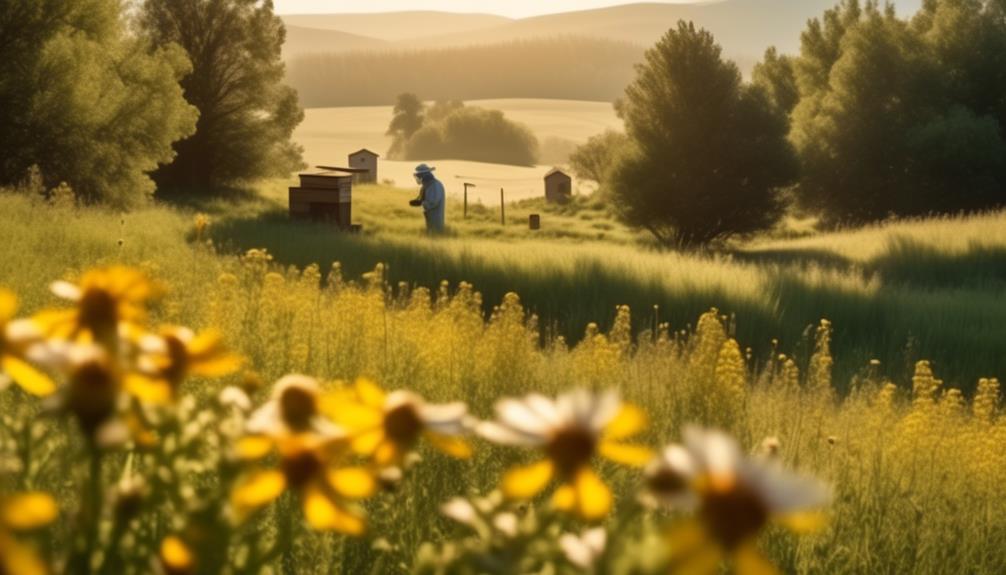
You might not realize it, but the buzzing bees you often take for granted are facing severe threats that could drastically reduce their populations. From habitat loss due to deforestation and urbanization, to diseases and pests, to the damaging effects of pesticides, wild honey bees are under siege.
Now, let's break down these threats:
Threat | Description | Impact |
|---|---|---|
Habitat Loss | Destruction of natural habitats like forests and meadows for agriculture and urban development | Reduces foraging opportunities and nesting sites |
Diseases and Pests | Varroa mites, fungal, bacterial, and viral diseases | Weakens or kills bees, can devastate entire colonies |
Pesticides | Chemicals used in agriculture can harm bees directly or contaminate nectar and pollen | Impairs bee health and behavior, can cause colony collapse |
It's crucial that we understand these threats and work to mitigate them. Without wild honey bees, our ecosystems would be drastically different and many plant species would suffer. You can play a role too, by planting bee-friendly plants, reducing pesticide use, and supporting organizations that protect wild bee populations. Remember, every action counts.
Conclusion
So, you now grasp that wild honey bees truly exist, making their homes in various habitats and using unique survival strategies. They play a crucial role in our ecosystem, but they're under threat from numerous dangers.
It's vital for us to understand and protect these industrious insects, as their decline could have significant ramifications. Let's strive to coexist harmoniously with these fascinating creatures, respecting their importance and ensuring their survival for generations to come.

